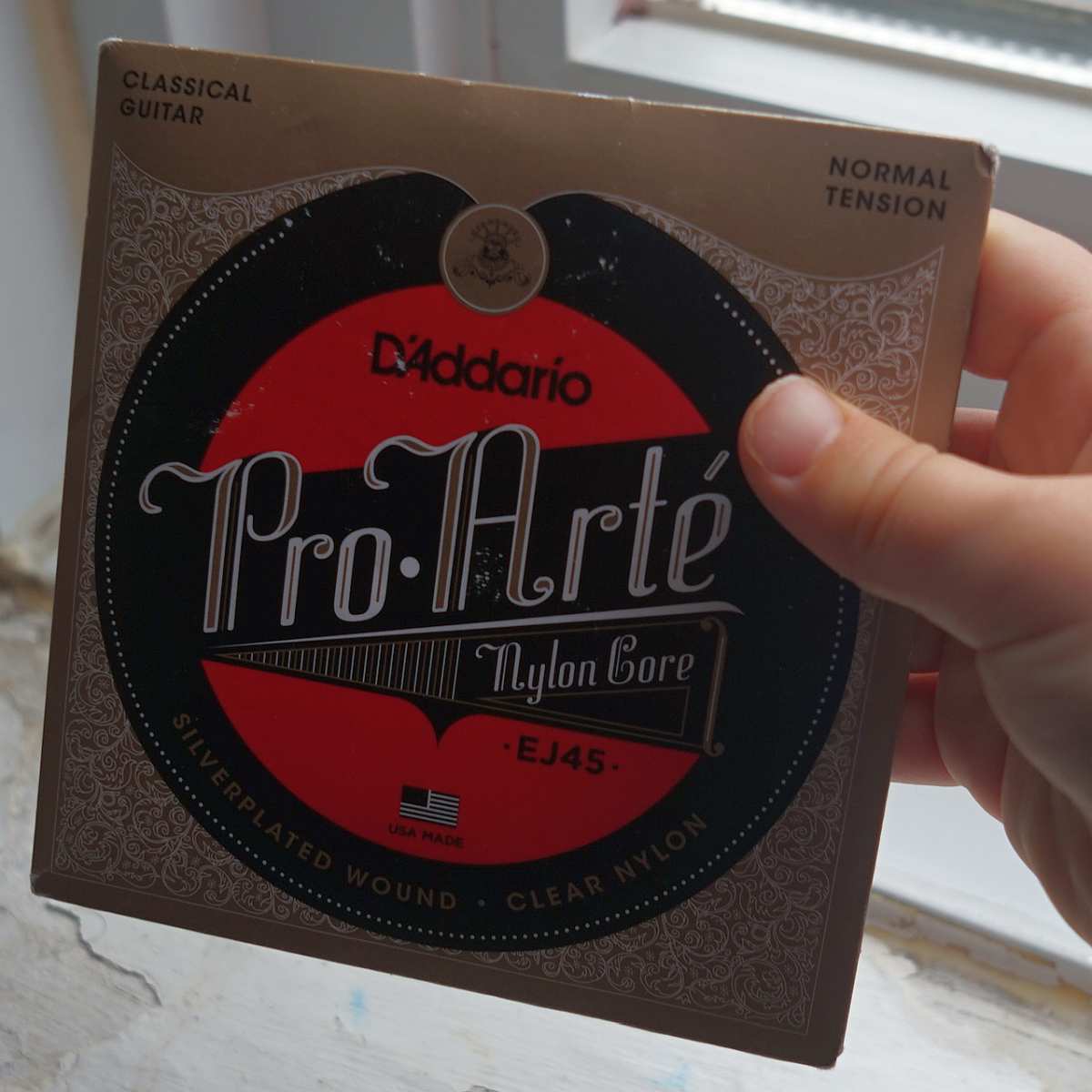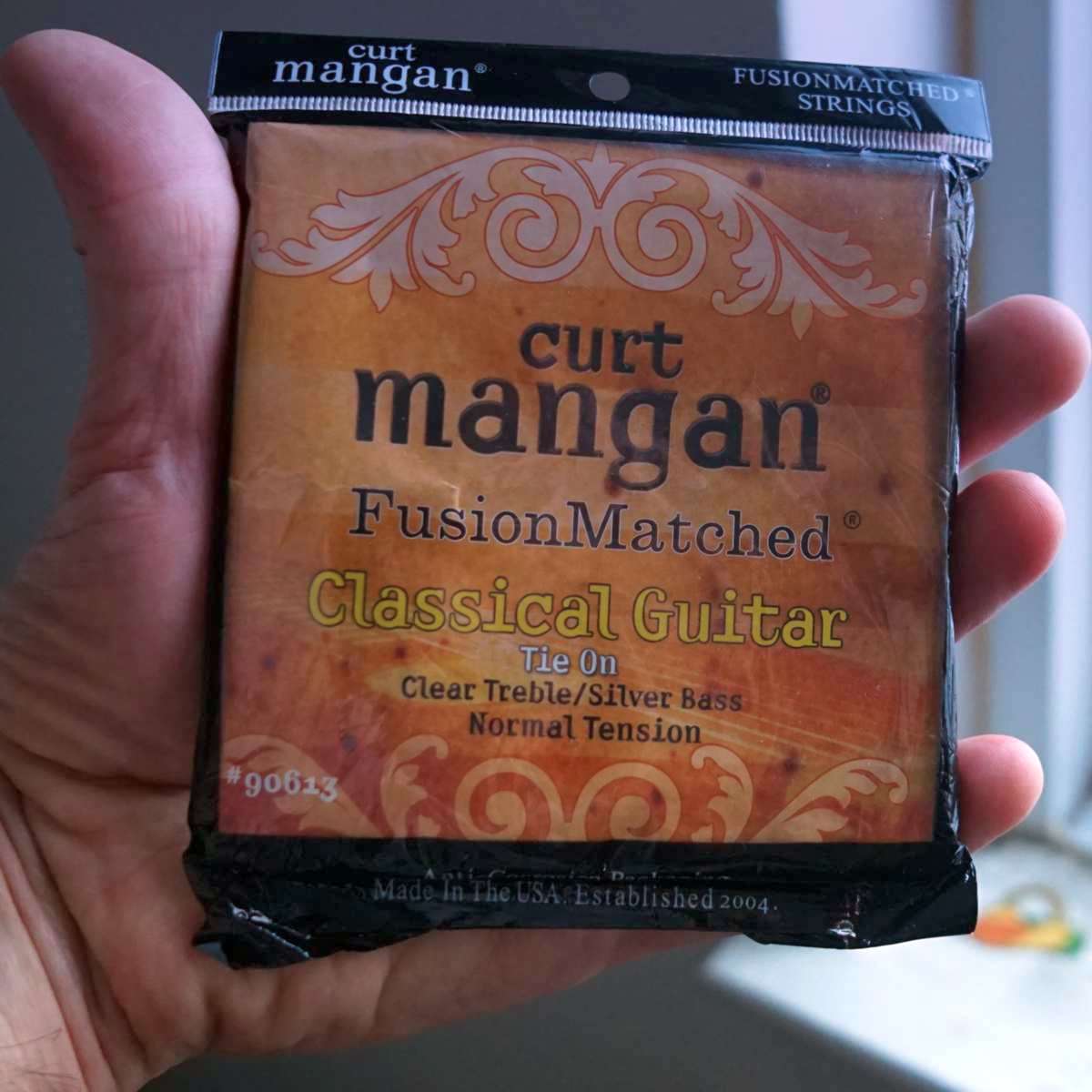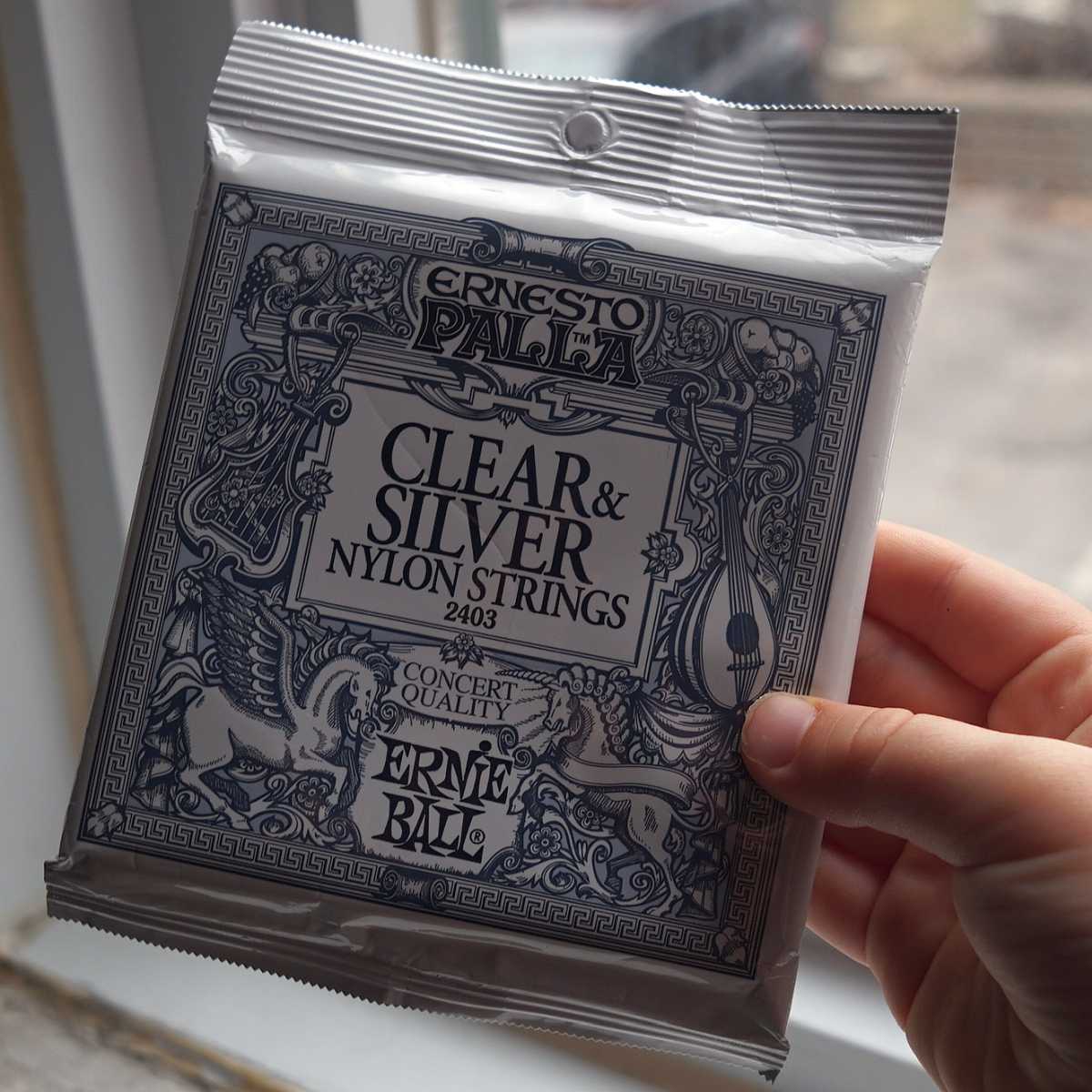If you're a fingerstyle player and you need a new set of strings for your nylon guitar, this is the guide for you.
Wondering what the best nylon guitar strings are for fingerpicking? I'm going to share with you my pick of the 5 best nylon guitar strings for fingerstyle guitar.
I've been playing fingerstyle guitar on a nylon string guitar long before I made the (incomplete) switch to steel string. As a classical guitarist, I've tried dozens of different brands to find what gave the best bang for my buck.
And now, I'll share with you my top pick for nylon guitar strings specifically for fingerstyle guitar, although the strings recommended here are excellent for classical guitar as well.
So if you're a finger picking enthusiast looking for a new set of nylon guitar strings, let's dive right in.
This post contains affiliate links. When you purchase using an affiliate link, I may earn a small commission without any extra cost to you.
What Are The Best Nylon Guitar Strings for Fingerpicking?
After trying out many sets of strings over time, I can truthfully say that the best set of strings you can buy for fingerstyle guitar are multifilament core, normal tension silver-plated copper wound nylon strings. And I'll explain what that all means a little later on, but if you want my top pick, it's a set of EJ45 Normal Tension strings by D'Addario.
To give you a better understanding of how to choose your next set of nylon guitar strings, we'll first discuss how nylon guitar strings are constructed.
Understanding Nylon Guitar Strings
When you purchase a set of strings for your nylon or classical guitar, the 1st, 2nd, and 3rd strings are usually made of clear nylon, and the wound strings are usually made of a multifilament nylon core wrapped in silver-plated copper wire.
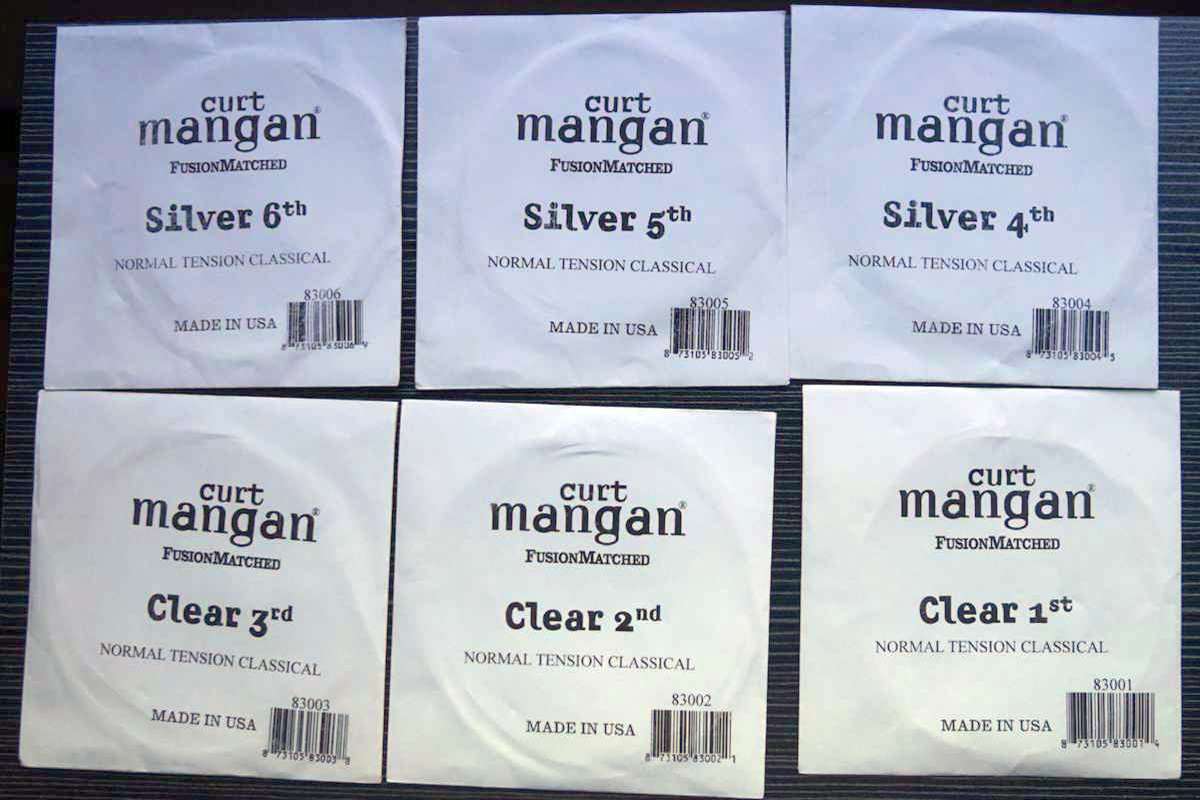
The primary difference between nylon and steel-string guitar strings is the use of nylon material and the absence of steel in the trebles. Do not ever use acoustic steel strings on your nylon string guitar, as you can seriously damage the instrument with the excess tension.
A Brief History of Nylon Guitar Strings
Before the advent of modern guitar construction techniques, guitarists had to use natural materials such as silk or gut for string construction. Unfortunately, this natural and somewhat disgusting material didn't lend itself to consistent results, both from a manufacturing standpoint and from a player's point of view.
Then, in the 1940s, owing to a wartime shortage of gut, guitar enthusiast and luthier Albert Augustine, along with Spanish Classical guitar virtuoso Andrés Segovia, pioneered the use of nylon for guitar strings. The duo also set upon silver-plated copper as the standard alloy used in string winding for the bass strings.
Materials Used In Nylon Guitar Strings
The techniques and materials that go into manufacturing nylon guitar strings have been essentially standardized since the mid-20th century. Nowadays, the vast majority of classical guitar strings contain nylon, and gut strings are more of a specialty item.
In string sets designed for nylon guitar, the lower guitar strings (the 6th to the 4th) consist of a multifilament nylon (or silk) core wrapped in silver-plated copper wire. The first, second, and third strings are unwound and made of plain nylon.
Since then, string manufacturers such as D'Addario have continued to refine nylon formulations. You can even purchase trebles which do not contain nylon, but are instead made of another hard material like fluorocarbon.
Tie-End vs Ball-End Nylon Strings
Nylon guitar strings come in two main end types: tie-end and ball-end. Traditional tie-end strings are much more common and require you to knot them at the bridge of your guitar, using a specific technique to avoid string slippage.
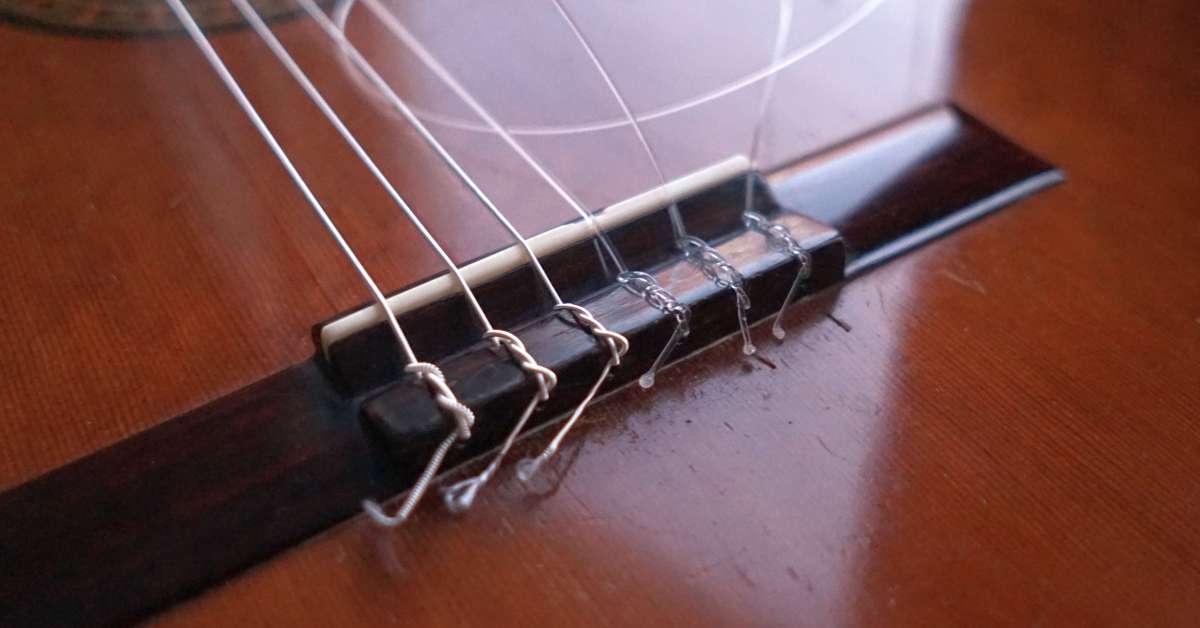
Ball-end strings, on the other hand, feature a small ball at the end, making installation quicker and easier at the bridge, similar to steel-string guitars—they simply slide through the hole at the bridge.
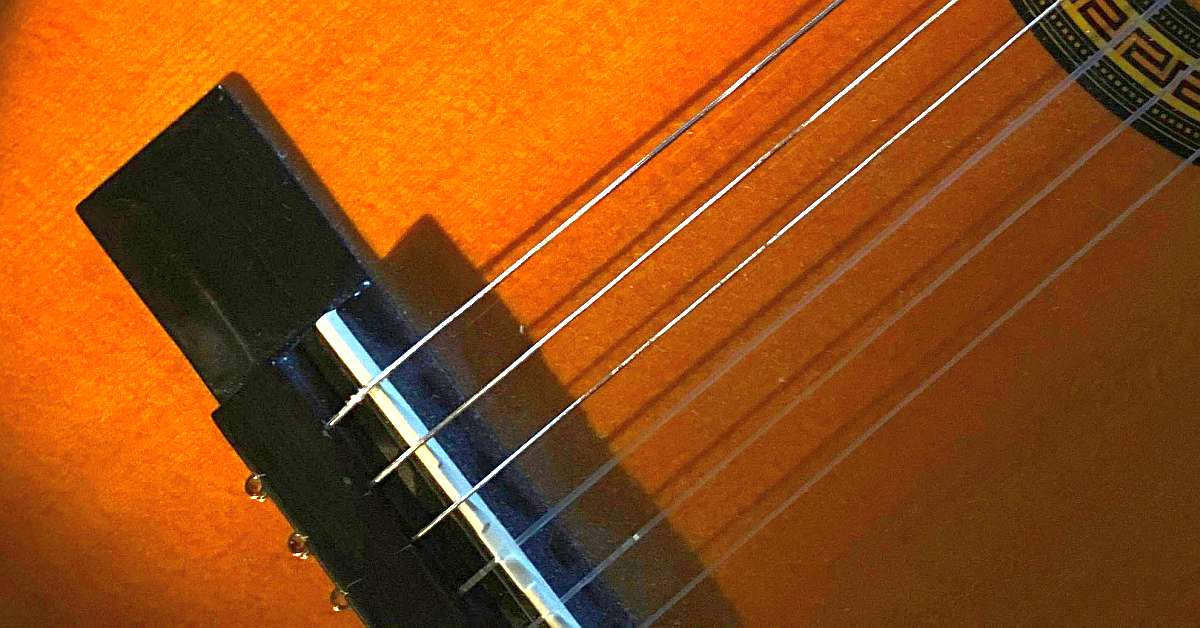
While ball-end strings offer convenience and faster string changing, you will have far more options among nylon string sets if you choose the tie-end variety since they are much more common.
Best Nylon Strings For Fingerstyle Or Classical Guitar
Now that we understand how to distinguish between the different types of nylon guitar strings, let's look at choosing the best nylon guitar strings for fingerstyle or guitar. You can put these sets on your nylon crossover or regular classical guitar.
1. D'Addario EJ45
For fingerstyle guitar, I recommend using a set of Normal Tension Nylon Strings by D'Addario.
- Good and consistent quality
- Great sounding nylon strings
- Not the most durable set
But here are two excellent options for nylon guitar strings that you should try if you want to explore a different sound or playing experience.
2. Curt Mangan Nylon Strings
I was seriously impressed with this set of nylon strings from Curt Mangan. The tone quality was great, and the strings lasted for quite a while. The bass strings are wound over a silk core, in contrast to the EJ45 which is wound around multifilament nylon.
- Great sound and very durable
- Holds the tuning very well
- Expensive and hard to find (not commonly stocked)
Whether it's boasting of handmade guitar strings or offering fusion matched sets, Curt Mangan certainly offers good value for money.
3. Savarez New Cristal/Cantiga
The Savarez string brand focuses heavily on traditional French craftsmanship to enhance the warmth of your strings. If you don't change your strings very often, these strings can be worth the extra investment.
- World-famous brand, commonly used in Europe
- Consistent quality with zero surprises
- A little on the expensive side
Savarez strings offer clear nylon trebles and precise windings for balanced tone. They're highly prized by classical guitarists, so these strings are a solid bet for fingerstyle. However, I find them a bit pricey for the quality, and they don't offer as good of a bang for your buck as D'Addario.
4. Augustine Classic Blue
There's no denying the innovation and passion that Augustine brings to their guitar strings. Not only do they emphasize their unique nylon formulations, they also offer strings in various tensions.
- Good quality for the price
- Great sound but not extraordinary
- Wears out quickly
If you want to experiment with different tensions or nylon types, I have a clear preference for the blue over the black. Unfortunately, I stopped buying Augustine strings when I found they would wear out faster than the Savarez.
5.Ernie Ball Nylon Strings
Ernie Ball is quite well known for their electric guitar strings, but I wanted to try their nylon tie-end strings for my classical guitar.
- Surprisingly good for the price
- Easy to install with little slippage
- Less-than-stellar sound quality and durability
Upon purchase of a set of Ernie Ball Ernesto Palla strings, however, I noticed that the durability of these strings was much less than comparable brands. Just a few weeks after placing them on my guitar, they already showed signs of discolouration.
While the set of Ernie Ball strings certainly were easy to play and their tone were balanced, the lack of durability was definitely a concern. If you don't plan on changing your strings very often, this could be a factor to consider.
If you're looking for the best nylon guitar strings for fingerstyle, you can't go wrong with any of the options presented here. As you improve as a fingerstyle guitarist, I encourage you to try something other than pure nylon trebles to see what gives you the best experience with your guitar.
I hope I've made your choice for your next set of nylon guitar strings a little easier.

